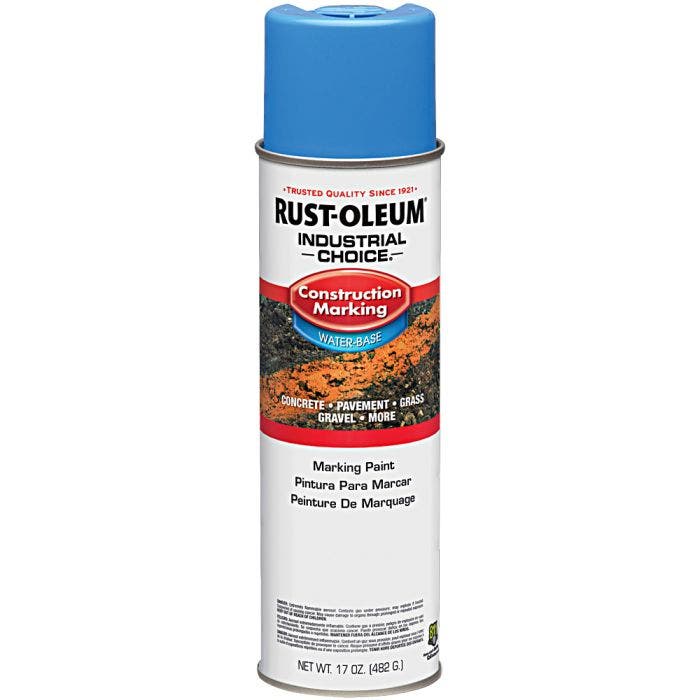Industrial Choice Construction Marking Paint, Blue, 17oz Can, Case of 12 Cans by Rust-Oleum
In stock
Only 3 left
SKU
M1400-3B
$87.95
READ MORE...
Product Information
Product Specs
- Color: Blue
- Weight (ounces): 17
- Paint base: Water
- Case count: 12
Product Warranty Information

- This product is covered under A.M. Leonard's exclusive 30-Day Down to Earth Guarantee. Click Here for more Details.
Product Features
- Water-based marking paint
- Bold colors
- Sold in cases of 12 17-ounce cans
- Non-clogging tip
Product Benefits
- Great for construction, excavation, surveying, landscaping, or other commercial operations
- Provides excellent visibility on concrete, pavement, soil, gravel, or grass
- Spray at any angle — upright, inverted, or horizontal
- More linear feet than the leading competitor
- Dries quickly and resists fading and chalking
- No-mess design
Product Shipping Weight
- 17 pounds
Frequently Asked Questions
1. What are some common plants that can thrive in a shaded garden?
Some common plants that can thrive in a shaded garden include hostas, ferns, impatiens, begonias, and astilbe.
2. How do I prevent weeds from growing in my garden?
There are a few ways to prevent weeds from growing in your garden. You can use mulch to suffocate the weeds, hand pull them as soon as they appear, or use a pre-emergent herbicide to prevent them from germinating.
3. What type of soil is best for growing vegetables?
The best type of soil for growing vegetables is a well-draining, nutrient-rich soil with a pH between 6 and 7. You can amend your soil with compost and other organic matter to improve its quality.
4. How do I choose the right fertilizer for my lawn?
You should choose a fertilizer based on the specific needs of your lawn, such as the type of grass you have and any nutrient deficiencies it may have. Look for a fertilizer with a balanced ratio of nitrogen, phosphorus, and potassium (NPK) and follow the application instructions carefully.
Some common plants that can thrive in a shaded garden include hostas, ferns, impatiens, begonias, and astilbe.
2. How do I prevent weeds from growing in my garden?
There are a few ways to prevent weeds from growing in your garden. You can use mulch to suffocate the weeds, hand pull them as soon as they appear, or use a pre-emergent herbicide to prevent them from germinating.
3. What type of soil is best for growing vegetables?
The best type of soil for growing vegetables is a well-draining, nutrient-rich soil with a pH between 6 and 7. You can amend your soil with compost and other organic matter to improve its quality.
4. How do I choose the right fertilizer for my lawn?
You should choose a fertilizer based on the specific needs of your lawn, such as the type of grass you have and any nutrient deficiencies it may have. Look for a fertilizer with a balanced ratio of nitrogen, phosphorus, and potassium (NPK) and follow the application instructions carefully.
Additional Product Information
Write Your Own Review


